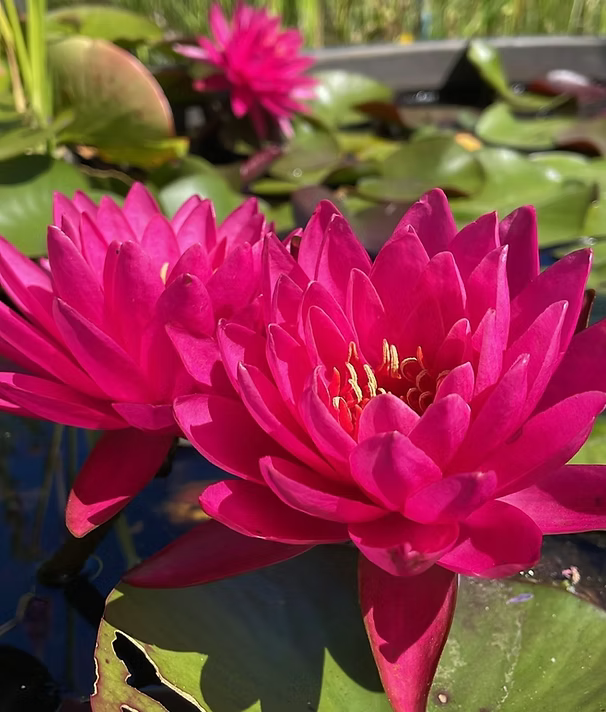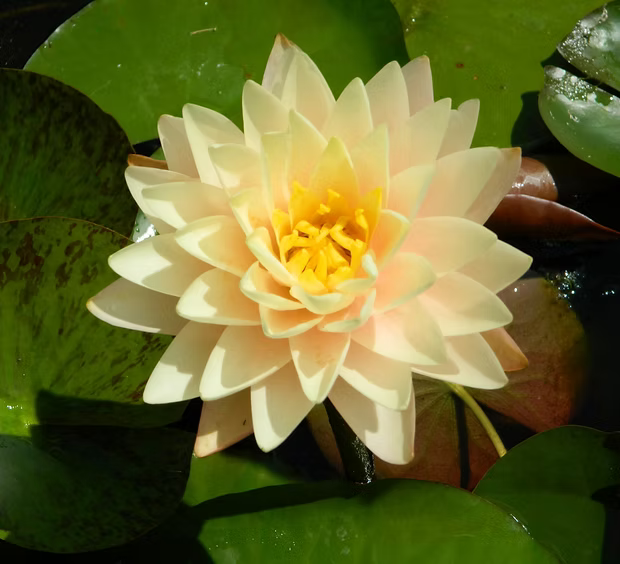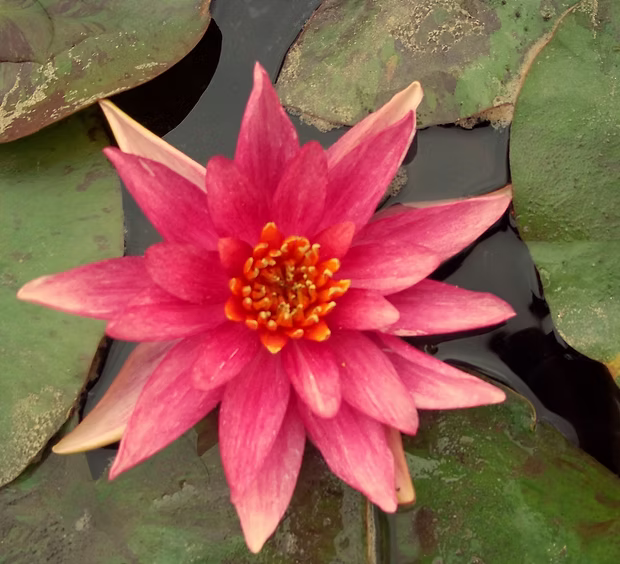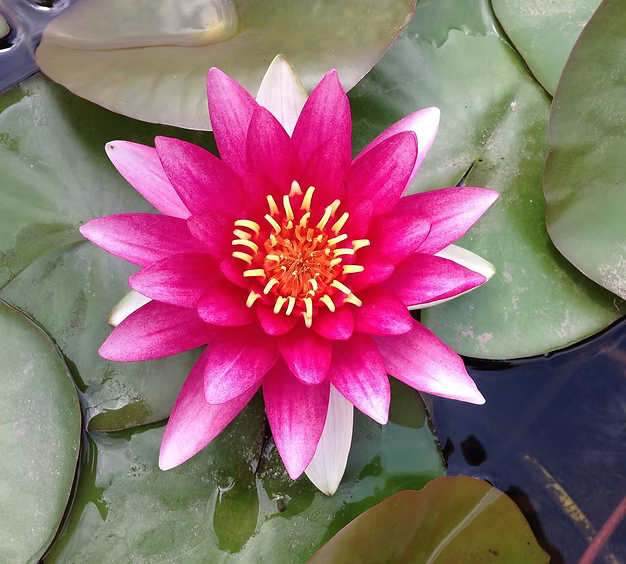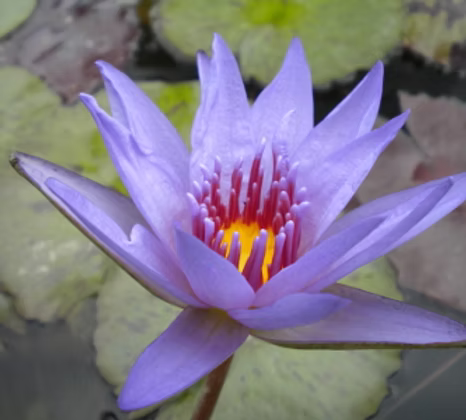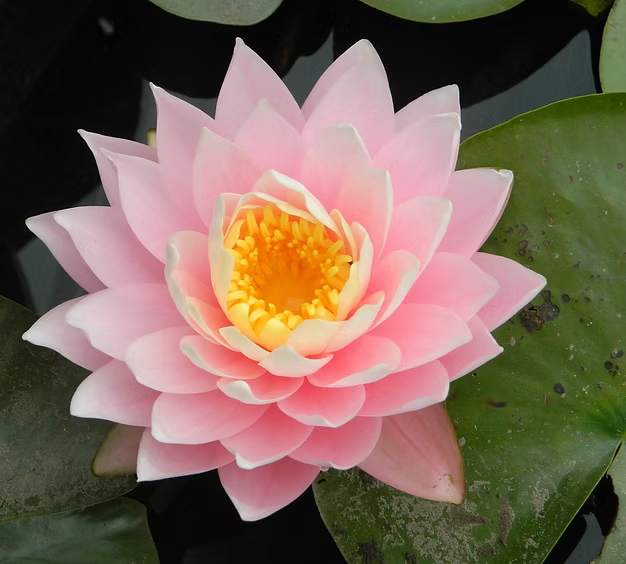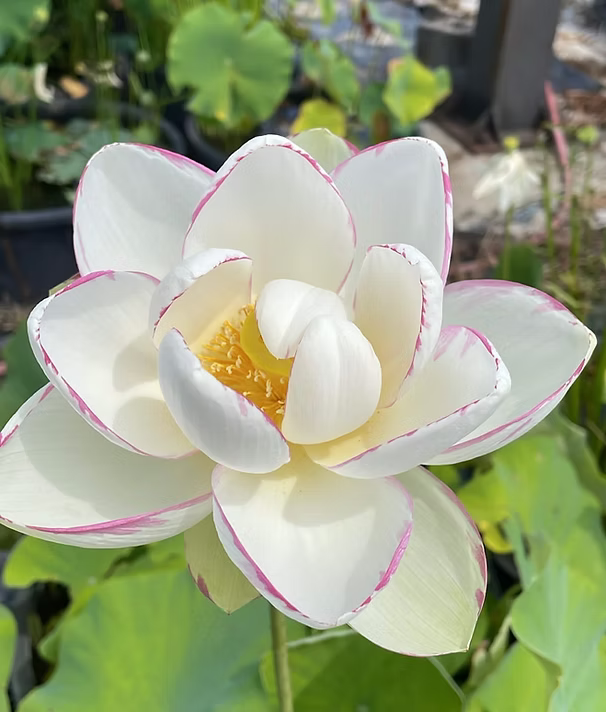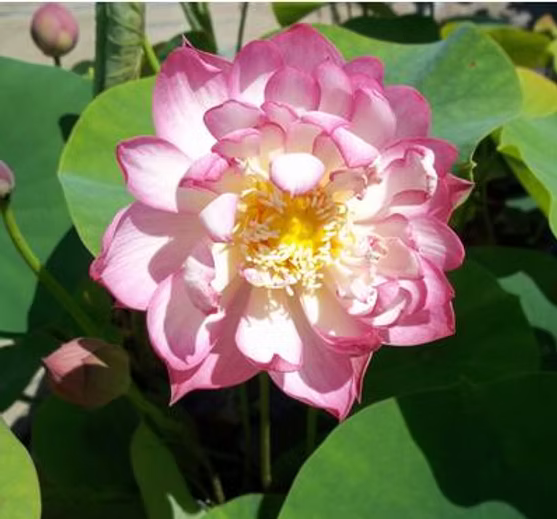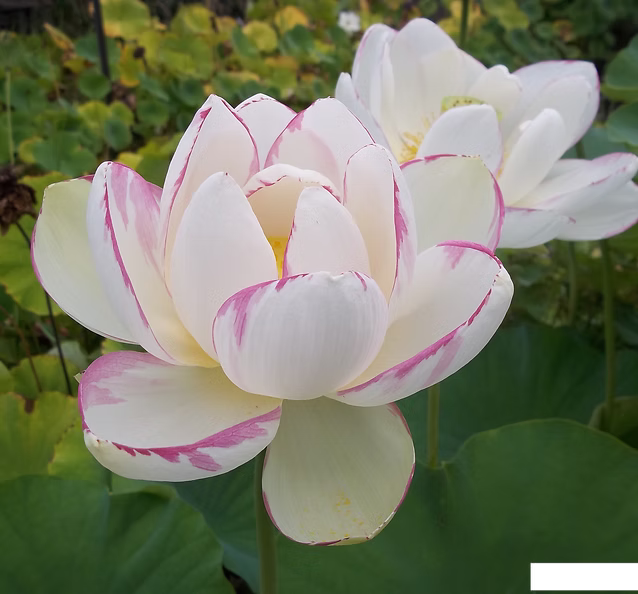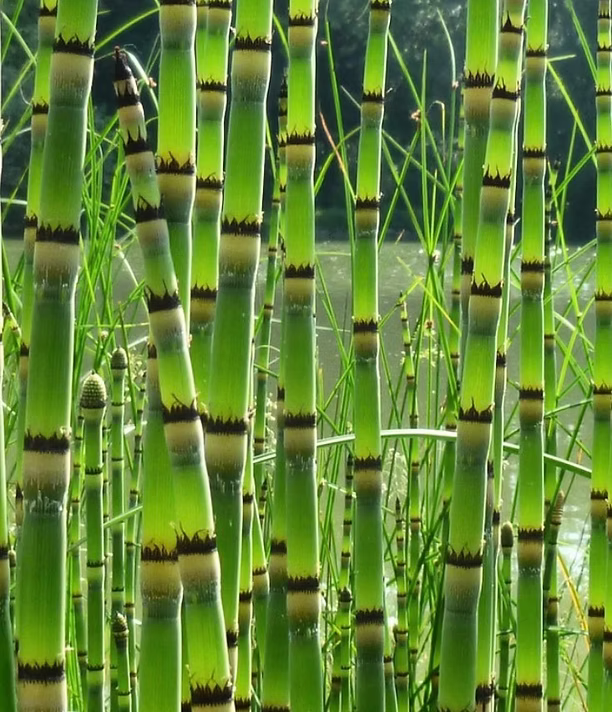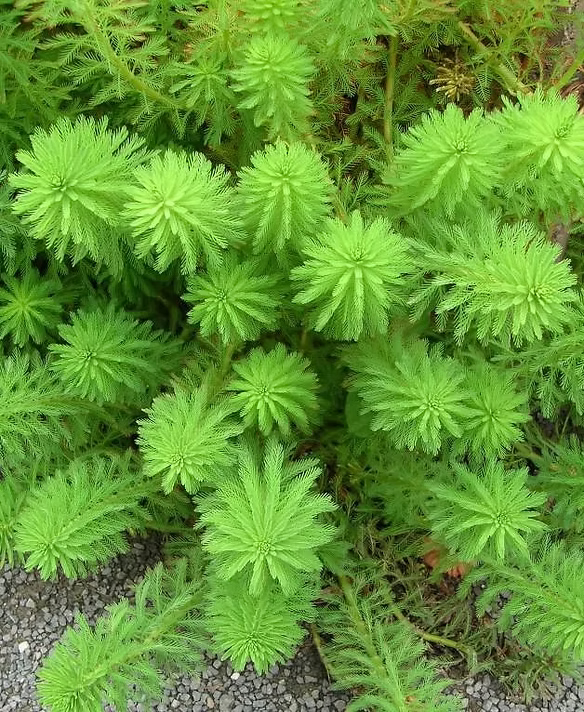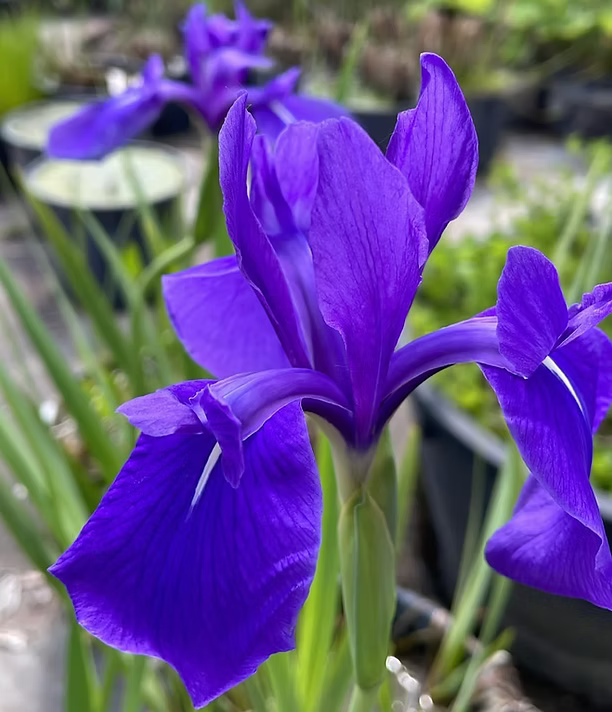Under 20€ for sale
176 products
176 products
Sort by:
PRESIDENT VIGER
(Lagrange - before 1900)
President Viger is an elegant and historic water lily, known for its medium-sized flowers with a vibrant deep pink color. The highly scented flowers add a refined sensory touch to your water garden. Perfect for enriching ponds and water gardens, this variety stands out for its combination of vivid color and enveloping fragrance.
Characteristics :
- Refined Flowers : Medium sized, with an intense pink colour that captures attention.
- Delicate Fragrance : A pleasant and enveloping fragrance to enrich the garden.
- Suitable for Decorative Ponds : Ideal for aquatic spaces that desire a touch of elegance and color.
- History and Tradition : A variety introduced before 1900, a symbol of timeless beauty.
With President Viger, give your pond a water lily that combines color, scent and a long tradition of refinement.
ROSY MORN
(Johnson - 1932)
Rosy Morn is a refined and delicate water lily, ideal for enriching ponds and water gardens with a touch of elegance. Its large star-shaped flowers, of a uniform light pink, rise elegantly above the water, creating an enchanting visual effect. Lightly scented, this variety adds a discreet and natural charm to any aquatic space.
Characteristics :
- Large and Elegant Flowers : Starry, of a uniform light pink, perfect for a harmonious atmosphere.
- Emergent Flowers : They rise above the water for a refined visual impact.
- Delicate Perfume : Adds a pleasant and discreet sensorial touch.
- Suitable for Elegant Ponds : Ideal for enhancing aquatic gardens with simplicity and refinement.
With Rosy Morn, transform your water garden into an oasis of serenity and natural beauty, ideal for decorative and harmonious environments.
SUMPTUOUS
(Latour-Marliac - 1908)
Somptuosa is an extraordinary and fascinating water lily, renowned for its enormous, cup-shaped, double and delicately scented flowers. During the first day of flowering, the petals present an elegant chromatic contrast: red in the center and white in the outer crowns. In the following days, the petals become almost completely red, giving a unique chromatic transformation. The stamens, of an intense dark orange, and the green leaves with brown spots and a bronze perimeter complete the ornamental effect. This variety is particularly floriferous, ideal for ponds with a great visual impact.
Characteristics :
- Extraordinary Flowers : Huge, double and scented, with a chromatic evolution from red and white to intense red.
- Ornamental Leaves : Green with brown spots and a bronze perimeter, perfect for a unique decorative effect.
- High Flowering : Very floriferous, ensuring a continuous show throughout the season.
- Suitable for Elegant Ponds : Ideal for creating an aquatic environment of great refinement and liveliness.
With Somptuosa, add to your water garden a water lily that combines beauty, fragrance and an extraordinary scenic presence.
CONQUEROR
(Latour-Marliac - 1910)
Conqueror is a water lily with timeless charm, characterized by large flowers with a unique color combination. The petals, an intense dark red in the center, delicately fade to white on the sides, while the sepals and outer petals have an elegant white pattern streaked with red. The dark green leaves complete the refined appearance of this variety, which stands out for its reflowering and its extraordinary visual impact.
Characteristics :
- Elegant Flowers : Large, with dark red petals fading to white and red-streaked sepals.
- Decorative Leaves : Dark green, ideal for a refined ornamental effect.
- Continuous Reblooming : Blooms repeatedly, providing beauty all season long.
- Suitable for Decorative Ponds : Perfect for creating a sophisticated and harmonious water garden.
With Conqueror, enrich your aquatic space with a water lily that combines intense colors and refinement, ideal for a classy pond.
FABIOLA
(Latour-Marliac - 1908)
Fabiola is an elegant and charming water lily, known for its large cup-shaped flowers. The petals, an intense deep red up to the middle, delicately fade to white towards the tips, creating a harmonious color contrast. The mahogany-colored stamens add a further touch of refinement. With both early and late blooming, Fabiola guarantees beauty and color in your water garden for much of the season.
Characteristics :
- Elegant Flowers : Large and cup-shaped, with a color combination of deep red and white.
- Refined Stamens : Deep mahogany for a unique decorative touch.
- Long Flowering : Early and late, perfect for ensuring a continuous presence in the pond.
- Suitable for Refined Gardens : Ideal for creating an elegant and sophisticated atmosphere.
With Fabiola, transform your pond into an oasis of serenity and color, enriching it with a water lily that combines charm and durability.
GLOSSY
(Latour-Marliac – 1894)
Lucida is a water lily of great historical charm, appreciated for its majestic star-shaped flowers and intense vermilion red color, which gradually darkens towards the center. The orange stamens give a lively touch of light, while the leaves, elegantly streaked with brown, complete the whole with a visual effect of rare elegance. Perfect for those who want a timeless variety, capable of enhancing any water garden with warm and refined tones.
Characteristics
- Starry Bloom : Large red flowers, darker in the center, which catch the eye with their star shape.
- Color Contrast : Orange stamens shine among the vermilion petals, creating an effect of deep charm.
- Mottled Leaves : The brown spotted foliage provides an additional decorative element, ideal for ornamental ponds.
- Prestige Variety : Coming from the excellence of Latour-Marliac (1894), it is an unmissable choice for collectors and enthusiasts.
With Lucida, your pond is transformed into a spectacle of colors and refined shapes, offering a visual experience that combines history, charm and a touch of timeless beauty.
LUSITANIA
(Latour-Marliac – 1912)
Lusitania is a water lily with a historic charm, characterized by medium-sized star-shaped flowers, which enchant with their warm light red tinged with white on the tips of the outer petals. This variety is distinguished by its exceptional re-flowering and vigorous growth, making it ideal for those who want a touch of liveliness and color in their ornamental pond.
Characteristics
- Medium-sized Star Flowers : The combination of the star shape and light red nuance creates a unique visual effect.
- Delicate Shades : The white on the outer petals adds brightness and lightness to the bloom.
- Rifiorentissima : Its ability to produce new flowers throughout the season makes it an ideal choice for those looking for an ever-blooming aquatic garden.
- Vigorous Growth : A resistant and robust plant, ready to adapt and give its best in any aquatic environment.
With Lusitania, your body of water is transformed into a stage of color, elegance and vitality, paying homage to the historic legacy of Latour-Marliac in every single petal.
PERRY'S BABY RED
(Slocum – 1983)
Perry's Baby Red is a small but charming water lily, characterized by small cup-shaped flowers with a ruby red color. The petals, curved inward, create a delicate rounded shape, while the outer ones have elegant white and red streaks. The dark green leaves complete the picture, providing a contrast that makes the plant even more spectacular. Thanks to its excellent re-flowering and resistance to partial shade, Perry's Baby Red adapts to different aquatic contexts, becoming a charming addition to any pond.
Characteristics:
- Small and domed flowers : The characteristic cup-shaped appearance and intense ruby red colour give a visual effect of great impact.
- Curved Petals : The inward curve creates a rounded shape, enhanced by the white and red-streaked outer petals.
- Dark Green Leaves : An elegant contrast that enhances the brilliance of the flower.
- High Reflowering and Versatility : Ideal even in semi-shaded situations, it guarantees continuous flowering throughout the season.
PERRY'S RED STAR
(Slocum – 1989)
Perry's Red Star stands out for its abundance of medium-sized star-shaped flowers that stand out strikingly above the water. The bright red petals are set off by pale pink sepals, creating a striking color contrast. The elongated, elegant bronze-green leaves complete the scene with a touch of natural refinement. Ideal for those looking for a pond full of character, this variety stands out for its intense, continuous flowering.
Characteristics:
- Starry and Highly Emergent Flowers : Medium-sized corollas that stand out decisively from the water surface.
- Bright Red : A vibrant color that adds energy to your body of water.
- Pale Pink Sepals : A delicate contrast, designed to further enhance the tone of the flower.
- Elongated Bronze Green Leaves : A touch of elegance that completes the chromatic composition.
Choose Perry's Red Star to give your water garden a striking visual impact, combining star shapes and vibrant colors in perfect harmony.
PERRY'S STRAWBERRY PINK
(Slocum – 1989)
Perry's Strawberry Pink is a water lily of rare chromatic sweetness, characterized by medium-sized star-shaped flowers in an intense strawberry red that delicately fades towards white at the tips of the petals. This light transition of color gives a fresh and inviting effect, capable of embellishing every body of water with a touch of charm and originality.
Characteristics
- Medium-sized star-shaped flowers : Corollas with an open and harmonious shape, which immediately capture attention.
- Strawberry Red with White Shades : A lively yet refined shade, perfect for adding a touch of cheer to your pond.
- Decorative Variety : Ideal for both small water gardens and larger ponds, thanks to its discreet elegance.
- Firma Slocum (1989) : A name that guarantees quality and tradition in the field of water lily hybridization.
Choose Perry's Strawberry Pink to give your water garden a touch of sweet vivacity, letting its star-shaped flowers enchant with delicate and surprising shades.
CAREX NIGRA
Aquatic Plant for Phytoremediation and Decoration
Carex Nigra is a perennial aquatic plant, appreciated both for its aesthetic value and for its phytoremediation capacity. This plant is able to effectively absorb pollutants dissolved in water, helping to keep the environment healthy and clean. The long, erect, thin and sharp leaves give it an architectural appearance, while the flowers, arranged in compact cylindrical spikes, are brown if male and light green if female.
Characteristics :
- Efficient Phytoremediation : Ideal for improving water quality thanks to its ability to absorb pollutants.
- Elegant Leaves : Long, erect and sharp, with a modern ornamental appearance.
- Contrasting Flowers : Compact, cylindrical spikes, brown (male) or light green (female).
- Suitable for Ponds and Wetlands : Perfect for decorative or functional bodies of water.
- Exposure : Prefers full sun or partial shade.
-
Depth and Height :
- Vegetation above water : Up to 60 cm.
- Depth under water : 2-5 cm.
- Flowering period : From April to July.
With Carex Nigra, enrich your pond with a plant that combines aesthetics, functionality and high purifying power.
JUNCUS ARTICULATUS
Versatile Aquatic Plant for Cold and Temperate Zones
Juncus Articulatus is a perennial, rustic and adaptable plant, ideal for enriching ponds and water bodies in gardens located in cold or temperate-cold areas. With a horizontal underground rhizome, this plant grows up to 70 cm in height. The stem, cylindrical and smooth, is accompanied by thin leaves with cylindrical blades and evident transverse septa. The inflorescence is large, with erect or slightly inclined branches, and flowers arranged in glomeruli that add a natural and elegant touch.
Characteristics :
- Elegant Stem : Erect, cylindrical and smooth, for a tidy and decorative appearance.
- Thin Leaves : Cylindrical blades with evident transverse septa.
- Natural Inflorescences : Large, with erect or erect-patent branches and flowers in glomeruli.
- Climate Resistance : Suitable for cold and temperate-cold climates of Europe, Asia and North America.
- Exposure : Prefers full sun or partial shade for optimal growth.
-
Depth and Height :
- Vegetation above water : Up to 60 cm.
- Depth under water : 2-5 cm.
- Flowering period : From June to October.
With Juncus Articulatus, transform your water garden into a natural and resistant oasis, perfect for creating serene and harmonious environments.
Filipendula rubra 'Venusta'
Filipendula rubra 'Venusta' is a perennial, rustic and rhizomatous herbaceous plant, known for its spectacular flowering. The leaves are pinnate, jagged and of a deep dark green. The tiny candy pink flowers are gathered in irregular and vaporous inflorescences, creating a scenographic effect and of great visual impact.
Plant Information:
- Exposure: Full sun or partial shade
- Flowering: July - September
- Height in moist soil: 100–150 cm
This plant adapts well to moist soils and sunny or partially shaded areas, making it ideal for naturalistic gardens, borders and areas where visual effect is particularly sought during the summer.
Hibiscus moscheutos (White, pink and red varieties)
Hibiscus moscheutos is a perennial herbaceous plant of American origin, very ornamental and often planted in groups to create scenic effects. From the woody base emerge long stems that support ovate-lanceolate leaves. Its beautiful funnel-shaped flowers, composed of five petals and up to 20 cm wide, can appear in different color variations:
- White flowers with red throat
- Pink flowers with red throat
- Completely red flowers
The flowers have a particular tendency to rotate with the movement of the sun, maximizing their exposure and visual effect.
Plant Information:
- Exposure: Full sun
- Flowering: July - August
- Height in moist soil: 80–150 cm
This plant is ideal for moist gardens or areas near watercourses where it can benefit from rich, well-drained soil, offering large, spectacular blooms that attract attention during the summer months.
FAQs
Use this text to answer questions in as much detail as possible for your customers.
Ogni pianta ha esigenze specifiche, ma in generale, le radici delle piante palustri devono essere immerse nel substrato, mentre le galleggianti vanno lasciate libere in superficie. L'uso di fertilizzanti naturali e il controllo della luce solare aiutano a mantenerle in salute. Ti invieremo una guida dettagliata con il tuo acquisto.
Sì! Le piante ossigenanti come il ceratophyllum assorbono i nutrienti in eccesso e riducono la crescita delle alghe. Le piante galleggianti come la lattuga d’acqua forniscono ombra e limitano l’evaporazione, contribuendo all’equilibrio dell’ecosistema acquatico.

